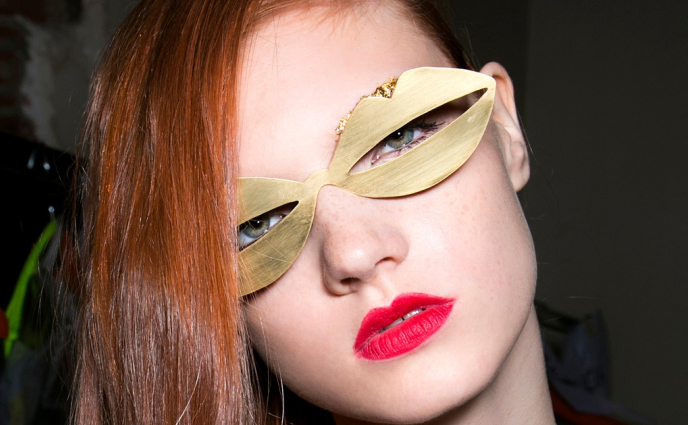There's a rise of software and apps that claim to filter blue light by changing the color of the screen to a reddish-orange hue (like Apple's Night Shift). "These apps adjust the whole temperature of your screen, which has its benefits in eye comfort, but they affect your color perception," says Grossman. "Digital screens also naturally emit high-energy light, which still enters your eye regardless of blue light-curbing software. These apps do not change the actual LEDs that are producing blue light."
Image via Apple
Image via Apple
As mentioned, the sun is also a culprit. "Fortunately, many new sunscreen formulas are now incorporating blue light filters for added protection, like Colorescience, which recently came out with the Sunforgettable Total Protection Brush-On Shield SPF 50 that protects against blue light in an easy-to-use brush-on SPF. Or, if you prefer a different type of product, Osmotics offers the Inner Light Biodefense Primer that blocks blue light in a translucent primer," says Schlessinger.
Lastly, it's important to note that distance matters. Mendelsohn breaks it down with examples.
· If an iPad is held 1 foot from a viewer's face, then there is 100 percent exposure.
· If an iPad is held 2 feet from a viewer's face, then there is 25 percent exposure.
· If an iPad is held 3 feet from a viewer's face, then there is 11 percent exposure.
"The level of exposure follows the Inverse Square Law, whereby Exposure = 1/(distance)^2. Therefore, watching a video with the iPad three feet away is far safer and enables one to view the screen for a longer duration of time."
Image via @baxterblue_
· If an iPad is held 1 foot from a viewer's face, then there is 100 percent exposure.
· If an iPad is held 2 feet from a viewer's face, then there is 25 percent exposure.
· If an iPad is held 3 feet from a viewer's face, then there is 11 percent exposure.
"The level of exposure follows the Inverse Square Law, whereby Exposure = 1/(distance)^2. Therefore, watching a video with the iPad three feet away is far safer and enables one to view the screen for a longer duration of time."
Image via @baxterblue_
In controlled doses, blue light can actually be helpful for your skin. "If you can't tolerate antibiotics or vitamin A products like Accutane to treat breakouts, LED therapy with blue light is a great alternative," says Schlessinger. "These blue light rays penetrate the skin to improve mild to moderate acne by killing the bacteria that causes redness, inflammation and breakouts. The Tria Positively Clear Acne Clearing Blue Light is one of the many blue light devices that uses blue light to target and treat breakouts."








